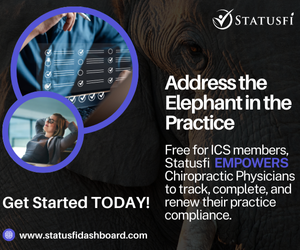
Managing Hamstring Strains

The Top 37 Clinical Pearls for Managing Hamstring Strains
Summer ushers in a new season of outdoor activities, ranging from running to water skiing. Unfortunately, the relatively high physical demands of these activities can lead to painful injuries of unconditioned muscles and tendons. The powerful hamstring muscle is a common victim, with strains carrying the potential for prolonged recovery.
The hamstring muscle group, consisting of the semimembranosus, semitendinosus, and biceps femoris, performs hip extension and knee flexion. These muscles may be strained from excessive load during eccentric contraction or from extreme stretch. Strains most commonly involve the biceps femoris near its musculotendinous junction. 1,2 Hamstring strains are classified from Grade 1 to Grade 3, based upon the amount of tissue damage, with Grade 1 representing strain without significant fiber tearing, Grade 2 indicating partial muscle tearing, and Grade 3 signifying complete muscle or tendon rupture.
Types of Hamstring Strain
The hamstring muscle is the most commonly strained muscle in the lower extremity of elite athletes. 3 Sports that involve sprinting and jumping, like track, football and soccer predispose athletes to eccentric strain injuries while participants in water skiing, martial arts, and dancing are more prone to stretch-type injuries, 1,4,5. Strains related to sprinting or running often occur during the terminal swing phase, just before foot contact, as the hamstring muscles are stretched and working hardest. 6,7 The muscle is most vulnerable to injury at the moment when its function rapidly changes from eccentric deceleration of the forward swinging tibia to concentric extension of the hip joint. 8
The majority of sports-related hamstring injuries tend to occur during a competition, particularly as the athlete tires. 38 In addition to muscular fatigue, a combination of several other factors increases the risk of a hamstring strain, including insufficient warm up, a history of a prior injury and hamstring inflexibility or weakness. 1,8,10,11,16,37,38 An imbalance of muscular strength, i.e. low hamstring to quadriceps ratio (<0.6), leads to injury when excessive quadriceps strength overpowers the capacity of the hamstring to eccentrically decelerate the forward progression of the tibia during the terminal swing phase of gait. 8,38
Bio-mechanical Risk Factors
Additional known biomechanical risk factors include hypertonicity in the quadriceps or iliopsoas, inadequate control of lumbopelvic muscles and poor running mechanics. 13,14,39 Injuries are thought to occur when the number of risk factors reaches a critical threshold. Hamstring injuries are more common with age and affect African Americans more frequently. 15,16 A study of college soccer players suggests that hamstring injuries are more common in males. 17
The majority of hamstring injuries occur abruptly during activity, with a tearing feeling accompanied by significant pain. In approximately 9% of cases, symptoms start more gradually. 2 Symptoms of hamstring strain vary from a mild annoyance to debilitating pain, based upon the site and amount of tissue damage. The most common presenting symptoms include pain in the lower buttock and posterior thigh when straightening the leg, particularly while ambulating or flexing forward.
Evaluation
Clinical evaluation may demonstrate bruising, which begins at the site of injury and slowly gravitates inferiorly. Palpation will reveal local tenderness, swelling, and hypertonicity. The point of maximum tenderness often represents the site of injury. Range of motion testing may produce pain upon passive hip flexion and knee extension, i.e., straight leg raise. Manual muscle testing should reproduce pain upon resisted hip extension or knee flexion. Due to the bi-articular nature of the hamstring, multiple test positions may be needed to assess function. Resisted knee flexion should be tested from a prone position with the hip stabilized at 0 degrees and resistance applied at both 15 degrees and 90 degrees of knee flexion. Hip extension should be assessed with resistance applied to the posterior thigh with the knee positioned at 90 degrees and 0 degrees of flexion. Muscular assessment commonly demonstrates hypertonicity in the hamstring, quadriceps and psoas muscles.
An orthopedic evaluation may demonstrate a positive Doormat sign (https://goo.gl/pTjcT7) wherein the patient reports pain when simulating the movement of wiping a foot on a mat while standing. The Hamstring Drag test (https://goo.gl/KaoJEF) or “Take off the shoe test” (TOST) is performed by asking a standing patient to take off the shoe of the injured leg while holding that shoe on the ground with the forefoot of the unaffected leg. The Slump test (https://goo.gl/gvjQnK) may help differentiate between hamstring injury and lumbar radiculopathy. It is important to note that individuals who have sustained recurrent hamstring injury may have scar tissue that interferes with normal sciatic neurodynamics. 19,39 Motion palpation may reveal deficits in sacroiliac or lumbar mobility. Neurologic evaluation of hamstring strain injuries should be normal with any positive findings raising suspicion of radiculopathy.
Diagnosis
The diagnosis of hamstring strain should be based upon an accurate history and physical evaluation. Radiographs are generally unnecessary unless there is suspicion of avulsion fracture of the ischial tuberosity (riders bone) or other bony pathology. 16,19 Advanced imaging of the hamstring, including MRI or ultrasound, (with MRI being more sensitive 21) is reserved for more severe injuries in order to help determine whether a surgical intervention will be necessary. 22
The differential diagnosis for hamstring strain includes contusion: fracture:neoplasm: hip pathology: posterior compartment syndrome; adductor strain; ischial bursitis; Herpes Zoster; piriformis syndrome; and. most notably, lumbar referral. Clinicians should be particularly alert to the possibility of radiculopathy in patients who present without a specific mechanism of injury or when pain extends beyond the knee.
Treatment
The management of hamstring injuries is challenging for both clinicians and patients, as healing is often delayed with persistent symptoms and re-injury rates between 12 and 31%. 23,24 The average convalescent period ranges from one to three weeks and is based upon the severity and location of the injury. The proximity of the injury to the ischial tuberosity generally correlates with the recovery period, with more proximal injuries requiring longer convalescent periods. 25,26,39 Injuries that result from slow speed stretching generally take longer to heal. 21 Recurrent injuries often take twice as long to heal as the initial injury. 28 Athletes who do not adequately rehabilitate their injury and return to a sport prematurely are at greater risk of re-injury and diminished performance. 4,8
Phase 1
The rehabilitation of hamstring injuries can be divided into three phases. The focus of Phase I is a reduction of pain and swelling immediately following an injury. A campaign of rest, ice, compression, and elevation (RICE) should be initiated. Ice or ice massage may be applied over the injured area for 15 minutes at a time. The use of a compression bandage may help to limit intramuscular swelling. There is some controversy regarding the use of NSAIDs for hamstring strains, as some studies suggest that these drugs may have a negative effect on recovery. 30,31Electrical stimulation and ultrasound are often used in the initial phase, although support for these modalities is lacking. A short period of immobilization, including the use of crutches, may be necessary for more severe strains. 32 Patients should avoid sustained knee flexion while using crutches, as this will place an excessive tensile load on the healing tissue. Pain tolerance should dictate a return to normal gait as well as the initiation of a light range of motion exercises, including active knee flexion and extension. Excessive stretching of the injured tissue should be avoided initially and the range of motion may be defined by the onset of pain. Manipulation may be utilized to resolve joint restrictions in the lumbar spine, sacroiliac joints or lower extremity.
Phase 2
Progression to Phase II begins when the patient can walk without pain and can tolerate a moderate degree of resisted knee flexion. The goal of Phase II is to improve flexibility, strength and biomechanical function of the hamstring and related lumbopelvic tissues. Athletes should gradually increase running to 50% of their maximum and avoid sprinting. Cross training with stationary cycling or swimming may be incorporated. Stretching exercises may be utilized to gradually restore flexibility to the hamstring as well as the psoas, adductors, quadriceps and lumbar spine. There is significant evidence suggesting that the incorporation of (Nordic) eccentric strength training exercises assists in the rehabilitation of hamstring injuries and minimizes recurrence. 33,34 (https://goo.gl/f2IQV3) Rehabilitation programs that incorporate trunk stabilization and progressive agility drills have been shown to decrease re-injury rates when compared to more traditional isolated stretching and strengthening programs. 23,28
See 15 Minute Core Webinar Here (https://goo.gl/83RkTG)
Soft tissue manipulation and myofascial release techniques, including IASTM, may be implemented judiciously for the hamstring and associated hip musculature. (https://goo.gl/mHVaMW) Nerve mobilization techniques may help restore neurodynamic flexibility, particularly for severe or recurrent injuries. (https://goo.gl/WUYJ1g)
Phase 3
Progression to Phase III begins when the patient is able to perform pain-free resisted knee flexion and can run at 50% speed without pain. The goal of Phase III is to return the patient to activity through sport-specific drills and trunk stabilization. During this final phase, patients will gradually increase from jogging at 50% intensity to full sprinting. Clinicians should address any gait abnormalities and consider footwear/orthotic needs. Athletes should not be returned to unrestricted sporting activities until they have achieved full range of motion, adequate hamstring to quadriceps strength ratios (>.6) and restoration of a pain-free sports function. Return to competition before restoration of pain-free, sport-specific function will likely result in recurrent or more severe injury. 8 Athletes should be counseled on proper warm up and cool down as they return to activity. A study of NFL cheerleaders suggested that performing closed-chain eccentric strengthening exercises twice per week lowered the rate of a hamstring injury. 40
References:
1. Garrett WE Jr. Muscle strain injuries. Am J Sports Med 1996;24(6 suppl): S2–8.
2. Verall GM, Slavotinek J, Barnes P. Diagnostic and prognostic value of clinical findings in 83 athletes with posterior thigh injury: comparison of clinical findings with magnetic resonance imaging documentation of hamstring muscle strain. Am J Sports Medicine, Nov 2003:31;6 p969
3. Lieberman GM, Harwin SF: Pelvis, hip, and thigh, Sportsmedicine: principles of primary care. Mosby, 1997 pp 306-314h
4. Ekstrand J, Gillquist J. Soccer injuries and their mechanisms: a prospective study. Med Sci Sports Exerc 1983;15:267–70.
5. Sallay PI, Friedman RL, Coogan PG, et al. Hamstring muscle injuries among water skiers. Functional outcome and prevention. Am J Sports Med 1996;24:130–6.
6. Garrett WE., Jr Muscle strain injuries. Am J Sports Med. 1996;24:S2–8
7. Orchard J. Biomechanics of muscle strain injury. New Zealand J Sports Med. 2002;30:92–98.
8. Drezner JA. Practical management: hamstring muscle injuries. Clin J Sport Med 2003;13:48–52.
10. Worrell TW. Factors associated with hamstring injuries: an approach to treatment and preventative measures. Sports Med 1994;17:338–45.
11. Croisier J-L. Factors associated with recurrent hamstring injuries. Sports Med
2004;34:681–95.
13. Cameron ML, Adams RD, Maher CG, Misson D. Effect of the HamSprint Drills training programme on lower limb neuromuscular control in Australian football players. J Sci Med Sport. 2007;12:24–30
14. Gabbe BJ, Bennell KL, Finch CF, Wajswelner H, Orchard JW. Predictors of hamstring injury at the elite level of Australian football. Scand J Med Sci Sports. 2006;16:7–13.
15. Freckelton G, Cook J, Pizzari T. The predictive validity of a single leg bridge test for hamstring injuries in Australian Rules Football Players. British Journal of Sports Medicine. August 2013
16. Woods C, Hawkins RD, Maltby S, et al. The football association medical research programme: an audit of injuries in professional football: analysis of hamstring injuries. Br J Sports Med 2004;38:36–41.
17. Cross K, Gurka K, Saliba S, Conaway M, Hertel J. Comparison of Hamstring Strain Injury Rates Between Male and Female Intercollegiate Soccer Athletes Am J Sports Med April 2013 vol. 41 no. 4
19. Clanton TO, Coupe KJ. Hamstring strains in athletes: diagnosis and treatment. J Am Acad Orthop Surg. 1998;6:237–248.
21. Kerkhoffs G, et al Diagnosis and Prognosis of Acute Hamstring Injuries in Athletes. Knee Surg Traumatology Arthrosc. 2013 February; 21(2): 500-509
22. Koulouris G, Connell D. Hamstring muscle complex: an imaging review. Radiographics. 2005;25:571–586.
23. Sherry MA, Best TM. A comparison of 2 rehabilitation programs in the treatment of acute hamstring strains. J Orthop Sports Phys Ther 2004;34:116–25.
24. Heiser TM, Weber J, Sullivan G, et al. Prophylaxis and management of hamstring muscle injuries intercollegiate football players. Am J Sports Med 1984;12:368–70.
25. Askling CM, Tengvar M, Saartok T, Thorstensson A. Acute first-time hamstring strains during slow-speed stretching: clinical, magnetic resonance imaging, and recovery characteristics. Am J Sports Med. 2007;35:1716
26. Askling CM, Tengvar M, Saartok T, Thorstensson A. Acute first-time hamstring strains during high-speed running: a longitudinal study including clinical and magnetic resonance imaging findings. Am J Sports Med. 2007;35:197-206.
28. Koulouris G, Connell DA, Brukner P, Schneider-Kolsky M. Magnetic resonance imaging parameters for assessing risk of recurrent hamstring injuries in elite athletes. Am J Sports Med. 2007;35:1500–1506.
30. Mishra DK, Friden J, Schmitz MC, Lieber RL. Anti-inflammatory medication after muscle injury. A treatment resulting in short-term improvement but subsequent loss of muscle function. J Bone Joint Surg Am. 1995;77:1510–1519.
31. Baoge L, Vanden Steen S, Rimbaut N, Philips E, et al. Treatment of skeletal muscle injury: a review. ISRN Orthopedics. 2012
32. Kujala U, Orava S, Jarvinen M Hamstring Injuries. Sports Medicine June 1997, Volume 23, Issue 6, pp 397-404
33. Hawkins RD, Hulse MA, Wilkinson C, Hodson A, Gibson M. The association football medical research program: an audit of injuries in professional football. Br J Sports Med. 2001;35:43–47
34. Copeland ST, Tipton JS, Fields KB. Evidence-based treatment of hamstring tears. Curr Sports Med Rep. 2009 Nov-Dec;8(6):308-14.
37. Verrall GM, Slavotinek JP, Barnes PG, et al. Clinical risk factors for hamstring muscle strain injury: a prospective study with correlation of injury by magnetic resonance imaging. Br J Sports Med 2001;35:435–9.
38. J Petersen, P Ho ̈lmich. Evidence-based prevention of hamstring injuries in sport Br J Sports Med 2005;39:319–323
39. Bryan C. Heiderscheit, BC et al. Hamstring Strain Injuries: Recommendations for Diagnosis, Rehabilitation and Injury Prevention JOSPT 2010 February; 40(2): 67-81
40. Greenstein JS, Bishop BN et al. The Effects Of A Closed-chain, Eccentric Training
Program On Hamstring Injuries Of A Professional Football Cheerleading Team
J Manipulative Physiol Ther 2011;34:195-200

















